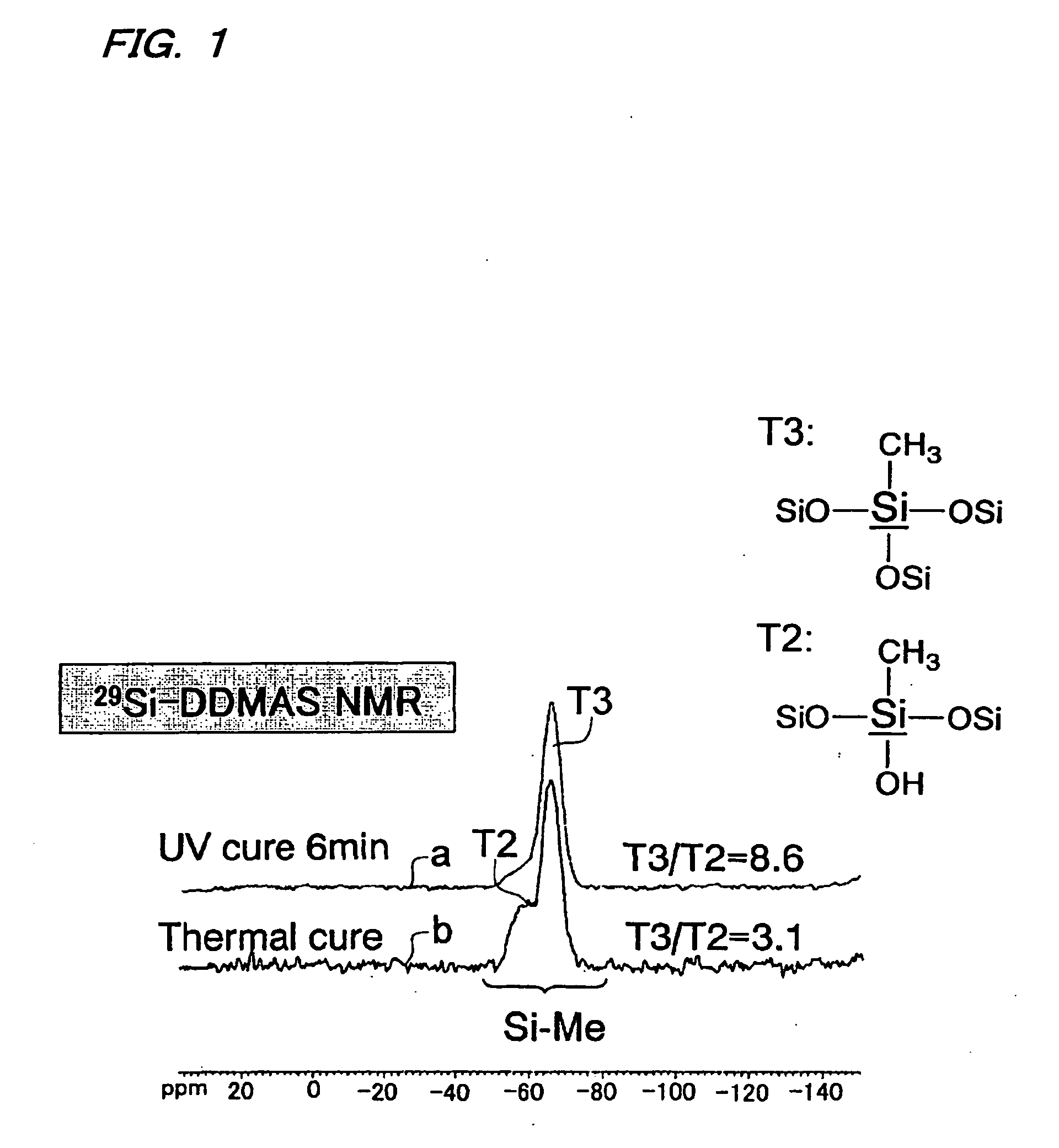Organic silica-based film, method of forming the same, composition for forming insulating film for semiconductor device, interconnect structure, and semiconductor device
a technology of organic silica and film, applied in the direction of liquid organic insulators, semiconductor/solid-state device details, transportation and packaging, etc., can solve the problems of damage to the transistor structure in the lsi, dehydration-condensation does not rapidly proceed, and accumulation of electric charges
- Summary
- Abstract
- Description
- Claims
- Application Information
AI Technical Summary
Benefits of technology
Problems solved by technology
Method used
Image
Examples
example 2
4.1.1b Example 2
[0145] In a quartz flask equipped with a condenser, 41.2 g of tetramethoxysilane and 180.1 g of methyltrimethoxysilane were dissolved in 227.3 g of propylene glycol monoethyl ether. After the addition of 136.5 g of ion-exchanged water to the solution, the mixture was stirred for one hour. After the addition of a solution prepared by dissolving 0.106 g of tetrakis(acetylacetonate)titanium in 79.9 g of propylene glycol monoethyl ether, the mixture was allowed to react at 50° C. for three hours. After the addition of 887.4 g of propylene glycol monoethyl ether, the reaction solution was cooled to room temperature. The reaction solution was concentrated under reduced pressure until the solid content became 15%. After the addition of 35.0 g of acetylacetone, propylene glycol monoethyl ether was added so that the solid content became 10% to obtain a film forming composition 2. The organic silica sol included in the composition 2 had a carbon content of 14.1 mol %, a sodium...
PUM
| Property | Measurement | Unit |
|---|---|---|
| wavelength | aaaaa | aaaaa |
| density | aaaaa | aaaaa |
| relative dielectric constant | aaaaa | aaaaa |
Abstract
Description
Claims
Application Information
 Login to View More
Login to View More - R&D
- Intellectual Property
- Life Sciences
- Materials
- Tech Scout
- Unparalleled Data Quality
- Higher Quality Content
- 60% Fewer Hallucinations
Browse by: Latest US Patents, China's latest patents, Technical Efficacy Thesaurus, Application Domain, Technology Topic, Popular Technical Reports.
© 2025 PatSnap. All rights reserved.Legal|Privacy policy|Modern Slavery Act Transparency Statement|Sitemap|About US| Contact US: help@patsnap.com


